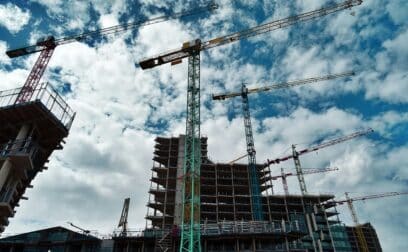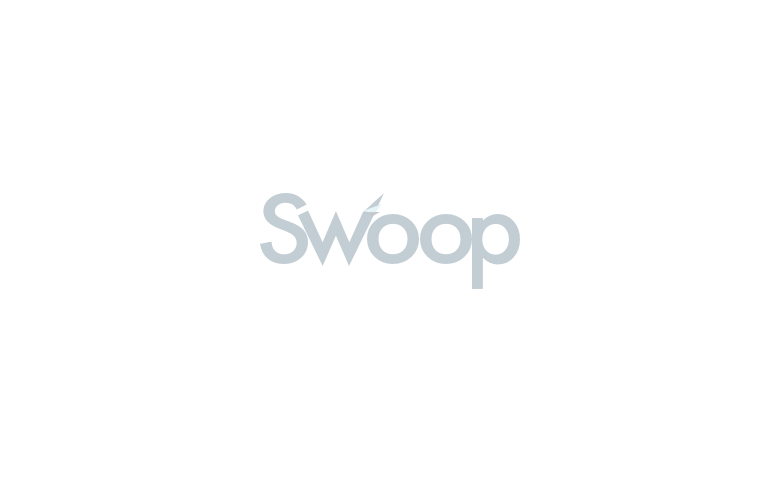TABLE OF CONTENTS
Page written by Chris Godfrey. Last reviewed on October 3, 2024. Next review due April 1, 2026.

In construction, land management, forestry, farming, landscaping and many other heavy duty industries, getting the job done right and on time is often reliant on the quality of your machinery and equipment. Bobcats are the versatile, go-anywhere, work-anytime machines of choice for many Canadian businesses and these vehicles can come in all shapes and sizes, with price tags to match – typically ranging from $20,000 to well over $100,000.
With prices like this, it’s clear that buying a new or used bobcat for cash can put a serious dent in your working capital – which is why many businesses opt for bobcat financing – preferring to buy or lease the equipment over time and keep their cash on hand for other purposes.
The prices of bobcat equipment vary according to the age and type of machinery you wish to buy. Typical prices include:
Bobcat financing and leasing refers to specialist business loans that can help organisations buy the equipment they need. This type of financing is more readily provided by online lenders than traditional banks and credit unions and it can be used to buy new or used machinery.
Firstly, financing or leasing may be a more tax efficient way to obtain the bobcat you need. Secondly, because you’ll only need to make a down payment on the equipment, instead of covering the whole cost upfront, you may be able to buy or lease a better, more expensive and up to date bobcat than you could afford with cash.
If you can’t or don’t want to buy your bobcat with cash, you can obtain the machines you need with a business loan or an equipment lease.
Let’s compare these options:
All business loans for the purchase of bobcats work with the same basic format: You borrow a sum of cash and then repay it over time. Interest charges and fees are added to the principal amount you borrow. The lender may retain a lien on the equipment during the term of the loan. At contract end you’ve paid the loan back and you own the bobcat outright.

Advantages of business loans for bobcat equipment

Disadvantages of business loans for bobcat equipment
Leasing works differently from business loans. With a lease, you’re not buying the equipment, you’re taking out a long-term rental. Depending on the type of lease you choose, (finance lease or operating lease), you may have the option to buy the bobcat equipment at contract end for a pre-agreed sum, (which could be as low as $1 but is typically the residual value of the equipment – which means what it’s worth in used condition).
Because you are not repaying the whole cost of the bobcat, leasing usually requires lower monthly payments than a business loan. You may also pay a smaller down payment – perhaps equal to one or two month’s repayment instalments.
If you choose not to buy the equipment at the end of the lease, (or you have chosen an operating lease that forbids it), the bobcat and any included accessories go back to the lender. You would then need to take out a new lease and obtain a new bobcat. (Which could allow you to obtain more modern and up to date machinery).
Some lessors (lenders) may give you the option to extend the lease if you prefer to keep the bobcat but do not wish to pay the residual.

Advantages of leasing bobcat equipment

Disadvantages of leasing bobcat equipment
Business loans to buy bobcats:
Equipment financing
The most common way to buy bobcats, equipment loans are ‘self-collateralising’ like auto loans – you use the bobcat as you pay for it, while the lender maintains a lien on the machinery. Once you pay the loan back, the lender releases the lien, and you own the bobcat outright. No added collateral is required.
Business term loan
The standard type of business loan. You receive a single, lump-sum cash injection and then pay it back in regular instalments, plus interest and any fees, over a fixed period of up to 25 years. Collateral may be required.
Business line of credit
This is a business loan that functions like a high-value credit card but comes with lower interest rates and fees. Withdraw as much as you want when you want from a loan facility up to the limit of your borrowing. You only pay interest on the sums you withdraw, not the whole line. This can significantly reduce your borrowing costs. Collateral may be required.
Invoice financing
Also known as account receivables financing, this type of loan allows you to borrow against the value of your unpaid invoices and is best for B2B organisations. The lender will usually provide up to 95% of the invoice value within a few days or even hours of the bill being raised. Your invoices act as security for the loan, no added collateral is required.
Leasing bobcat equipment:
Finance lease
A finance lease gives the lessee (you) the option to buy the bobcat at contract end. You provide a down payment and then pay a monthly rental sum to use the equipment during the contract period. At the end of the lease you can either pay the residual sum and own the bobcat, extend the lease and continue to rent, or give the bobcat back to the lessor. A finance lease may or may not include maintenance and servicing of the equipment. You will usually be responsible for the bobcat’s insurance.
Operating lease
An operating lease is a simple long-term rental agreement. There is no option to buy the bobcat at contract end. You provide a down payment and then pay a monthly rental sum to use the equipment. When the lease expires, the bobcat returns to the lessor. The lessor provides equipment maintenance and servicing, but you will usually be responsible for the bobcat’s insurance. An operating lease often comes with lower monthly payments than a finance lease.
You will typically need a personal credit score of +640 to obtain financing to buy or lease a bobcat. Some lenders may offer funding to borrowers with scores in the mid-500s, but you should expect to pay a higher interest rate, borrow a smaller sum, and pay a larger down payment. As a rule of thumb, the more expensive the equipment you want to buy, and the more you need to borrow, the better your credit score needs to be.
Although every lender will have their own qualifying criteria, some fundamental rules apply. In most cases, lenders will need to see:
You will also usually need to provide bank statements, tax returns and other financial documentation. However, even if your credit score is weak and/or you’ve been turned down elsewhere, it may still be possible to get the bobcat equipment financing you need. To find out if you qualify before you apply, contact Swoop to discuss your funding needs with a finance expert.
Interest rates and fees for bobcat financing can vary significantly, so it makes sense to shop around before settling on a lender. You can do this by approaching banks, credit unions and online lenders one by one, or you can use the services of a loan marketplace that will introduce you to a choice of bobcat loans from different lenders. Some marketplace platforms can also give you advice and help you with the application process. This can be especially useful for borrowers who have never taken out an equipment loan before.
No matter if you’re seeking your first bobcat loan or you’re a seasoned borrower, working with business finance experts can make all the difference when applying for funding. Contact Swoop to discuss your borrowing needs, get help with your application and to compare high-quality bobcat equipment financing deals from a choice of lenders. Get your business the equipment it deserves. Register with Swoop today.
Written by
Chris is a freelance copywriter and content creator. He has been active in the marketing, advertising, and publishing industries for more than twenty-five years. Writing for Barclays Bank, Metro Bank, Wells Fargo, ABN Amro, Quidco, Legal and General, Inshur Zego, AIG, Met Life, State Farm, Direct Line, insurers and pension funds, his words have appeared online and in print to inform, entertain and explain the complex world of consumer and business finance and insurance.
Swoop promise
At Swoop we want to make it easy for SMEs to understand the sometimes overwhelming world of business finance and insurance. Our goal is simple – to distill complex topics, unravel jargon, offer transparent and impartial information, and empower businesses to make smart financial decisions with confidence.
Find out more about Swoop’s editorial principles by reading our editorial policy.
Related pages
Get your free Bobcat financing quote today
Join the 110,000+ businesses just like yours getting the Swoop newsletter.
Free. No spam. Opt out whenever you like.
Kingfisher Way, Silverlink Business Park, Newcastle upon Tyne, NE28 9NX, UK
View in Google MapsAberystwyth Innovation and Enterprise Campus
Gogerddan Campus
Aberystwyth University
Ceredigion
SY23 3EE
Dogpatch Labs, The CHQ Building, Custom House Quay, Dublin, Ireland
View in Google MapsSuite 801, Level 8, 84 Pitt Street, Sydney, NSW 2000, Australia
View in Google Maps43 W 23rd St, New York, NY 10010, United States
View in Google Maps21 Dreyer Street, Cape Town, South Africa, 7708
View in Google Maps
Disclaimer: Swoop Finance Ltd (Swoop) helps Canadian firms access business finance, working directly with businesses and their trusted advisors. We are a credit broker and do not provide loans or other finance products ourselves. All finance and quotes are subject to status and income. Applicants must be aged 18 and over and terms and conditions apply. Guarantees and Indemnities may be required. Swoop can introduce applicants to a number of providers based on the applicants’ circumstances and creditworthiness. Swoop may receive a commission or finder’s fee for effecting such introductions. If you feel you have a complaint, please read our complaints section highlighted above and also contained within our terms and conditions.
Clever finance tips and the latest news
Delivered to your inbox monthly
Join the 110,000+ businesses just like yours getting the Swoop newsletter. Free. No spam. Opt out whenever you like.




